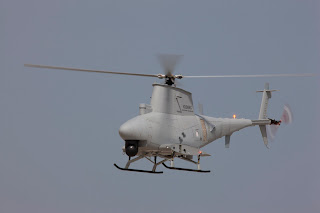we rarely see this in India. USN seems be firing right and left. below is over period of 2 months only. and these are not deck
hands but commanders of big ships.
Navy has fired 6 commanders since January, triple its usual monthly rate
By Craig Whitlock
Washington Post Staff Writer
Saturday, March 6, 2010
The Navy has fired six commanding officers since the start of the year -- triple its usual monthly rate -- including a foul-mouthed captain who was dismissed for subjecting her crew to "cruelty and maltreatment" aboard a warship in the Pacific.
Capt. Holly Graf, commander of the USS Cowpens, a guided-missile cruiser, was relieved of duty Jan. 13 after an investigation found she cursed so much at her 400-member crew that even the sailors -- no strangers to four-letter words -- were intimidated.
According to the Navy inspector general's report released this week, officers complained that their captain humiliated them in front of the rest of the crew by calling them "idiots" and "stupid" as she spat a stream of obscenities.
One noncommissioned officer said Graf treated him like a toddler, forcing him to take a "time out" by standing alone in an empty watch room.

Although verbal abuse would hardly put Graf among the worst tyrants ever to command a ship at sea, her former crew members have been exacting mutinous revenge in recent weeks by posting hundreds of anonymous comments on the Internet that describe her as "Horrible Holly," as well as a modern-day Captain Bligh.
Graf's has been highlighted in much of the criticism. One Web site,
http://www.militarycorruption.com, called her "an incompetent and unstable 'politically correct' poster girl for all the super feminists at the Pentagon and the U.S. Naval Academy."
Graf has also been accused on the Web site of endangering sailors' lives by engaging the Cowpens in a "drag race" with a destroyer, the USS John S. McCain, near Okinawa, Japan. The inspector general's report confirmed that the race had taken place last year but concluded that allegations Graf had endangered the Cowpens were "unsubstantiated."
The six commanding officers the Navy has fired since Jan. 8 represent an unusually high number for the service. A total of 55 commanding officers were dismissed for cause from 2005 to 2009, an average of 11 a year, according to statistics supplied by the Navy.
Lt. Justin Cole, a Navy spokesman, said that fewer than 1 percent of the service's approximately 1,500 commanding officers are relieved each year but added that the spate of firings so far in 2010 was not part of a planned crackdown or policy change.
"We hold them to high standards," he said of the officers. "But standards of accountability have remained consistent throughout the years."
Many Navy skippers who get the boot have been accused of sexual misbehavior.
One commanding officer was fired in January after he was arrested on charges of soliciting oral sex from an undercover officer for $20. Another commander was dismissed last month for being involved in "an inappropriate relationship" with a female officer, according to the Navy.
Navy culture and standards dictate that a captain is held responsible for any major mishap on a ship;
a commander will almost certainly be fired, for instance, if a vessel runs aground, even if low-ranking sailors were directly to blame.
A study conducted last year by the Navy Times, however, found that personal misconduct was the leading cause of commanders losing their jobs, with about one-third of all firings occurring for that reason between 1999 and 2008.
Findings of "cruelty and maltreatment" -- the judgment levied against Graf -- are few and far between.
The Naval Inspector General's office launched its investigation of Graf in June after receiving three anonymous complaints. Of the 36 sailors who were subsequently interviewed, 29 said she had verbally abused them, according to the 50-page report. Crew members cited an "environment of fear and hostility" on the Cowpens, with one saying, "21 years in the Navy and this is the poorest climate I've ever seen."
Investigators upheld other allegations against Graf, including that she abused her position for personal gain by forcing sailors to walk her dogs and by compelling a junior officer to play piano at a Christmas party at her house.
Graf took command of the Cowpens, based in Yokosuka, Japan, in March 2008. Navy officials said she had declined all interview requests since being relieved of command. She did not respond to an e-mail seeking comment for this article.
In a written response to Navy investigators, she acknowledged resorting to foul language, but justified it as a tactic for getting crew members' attention.
"Many times I raised my tone (and used swear words) to ensure they knew this time, it was no kidding," she wrote. "I also did it on other occasions to intentionally pressurize the situation."
Navy officials said Friday that Graf has remained at Yokosuka Naval Base since she was fired, pending reassignment to the Navy Air and Missile Defense Command in Dahlgren, Va.

